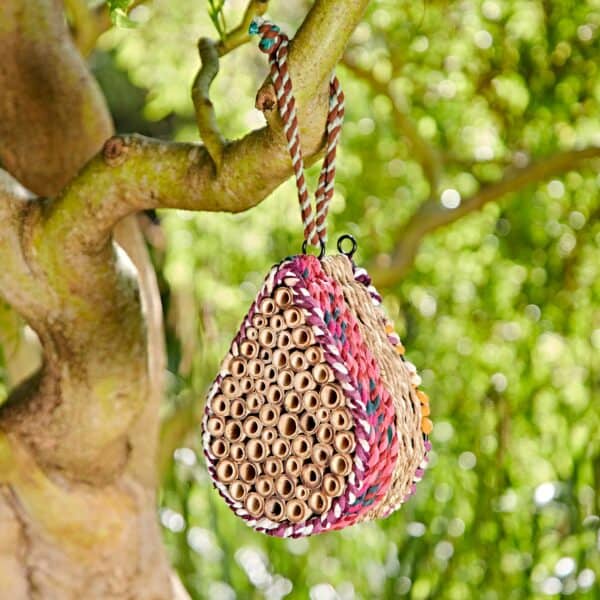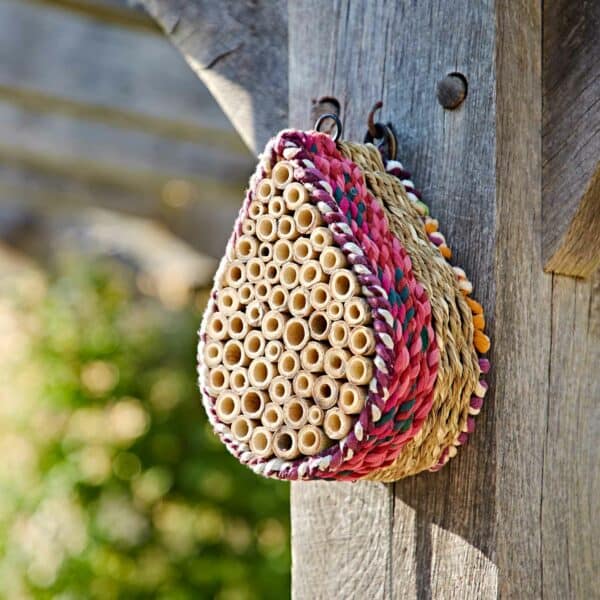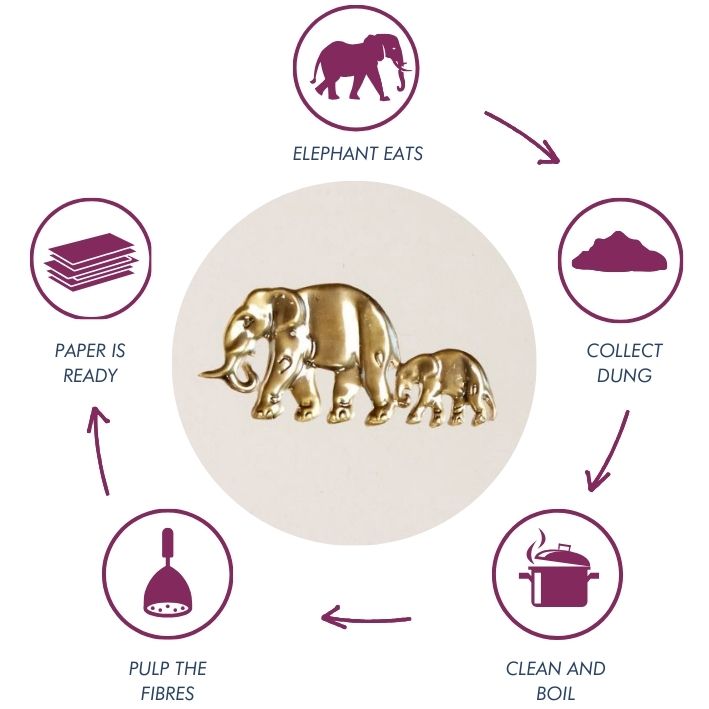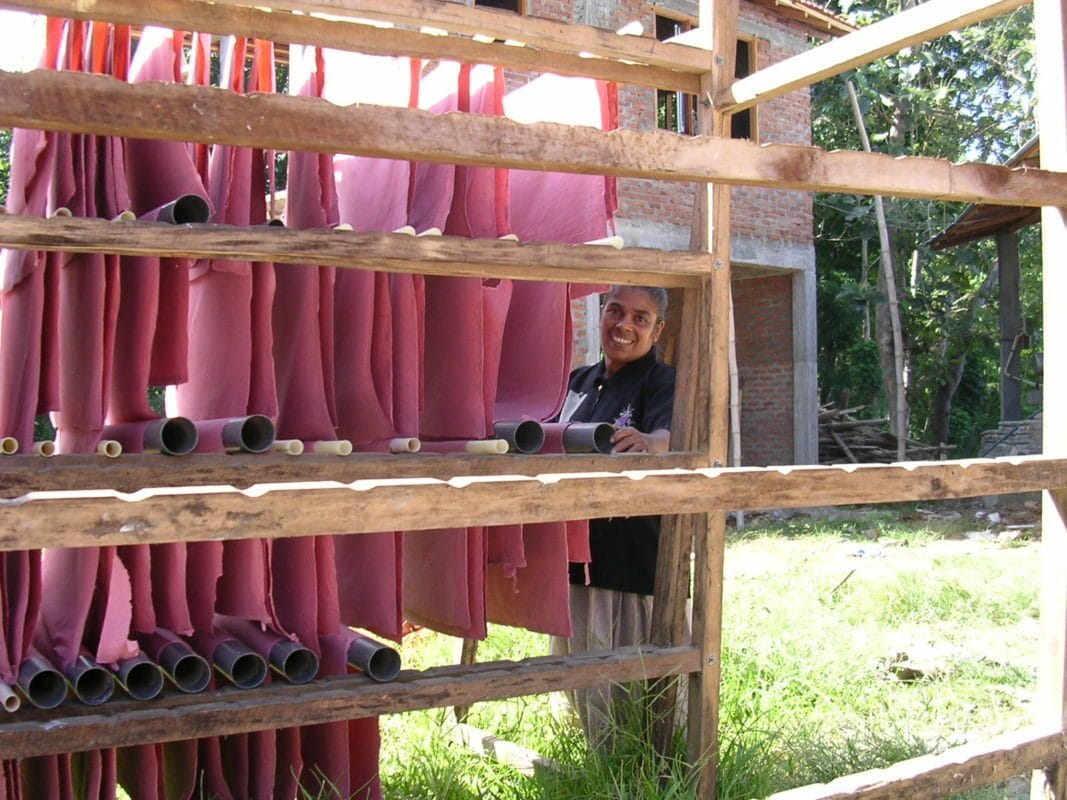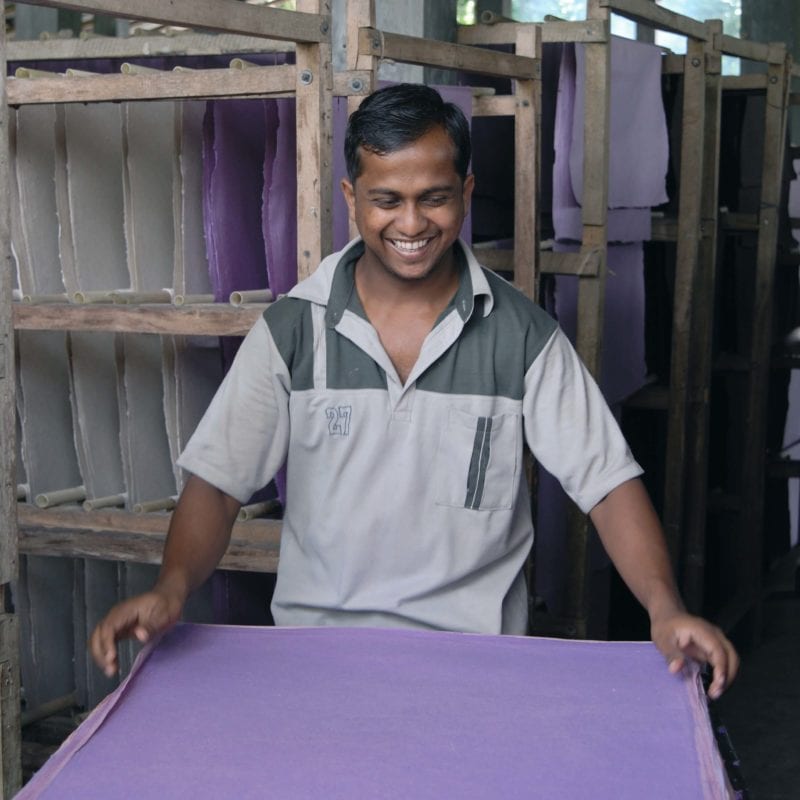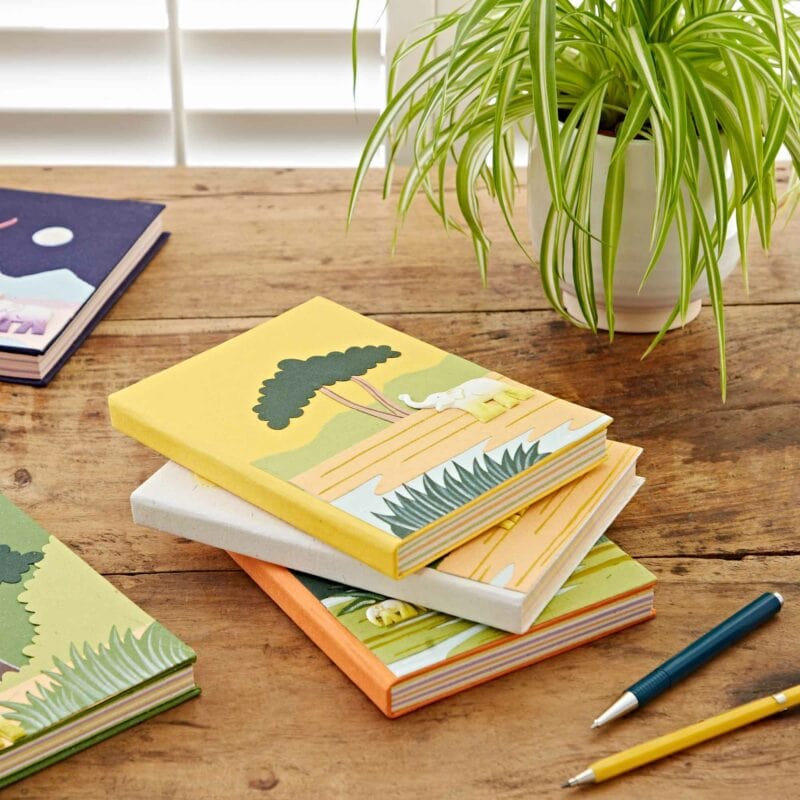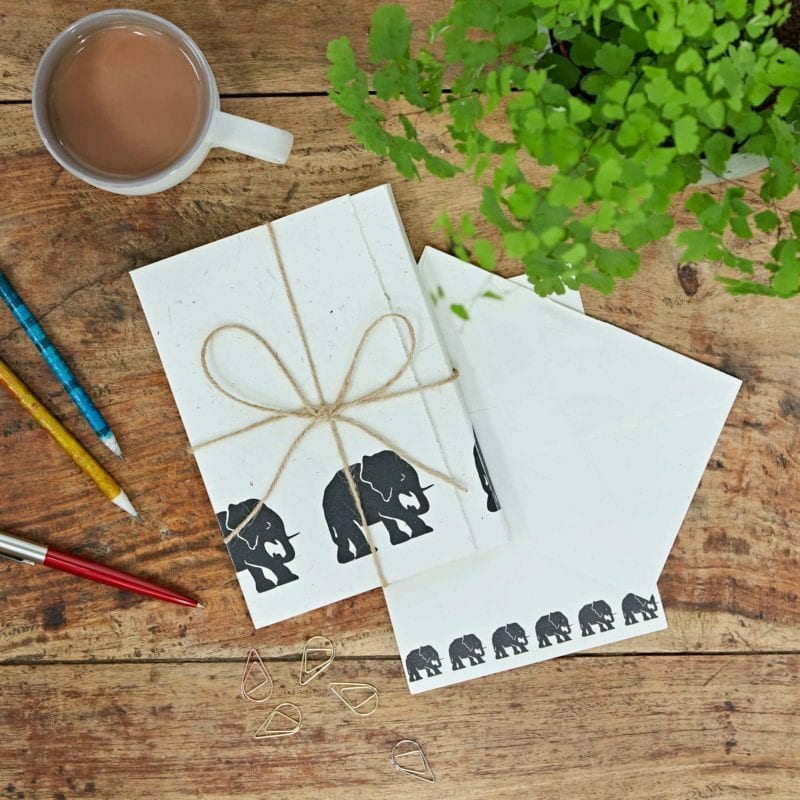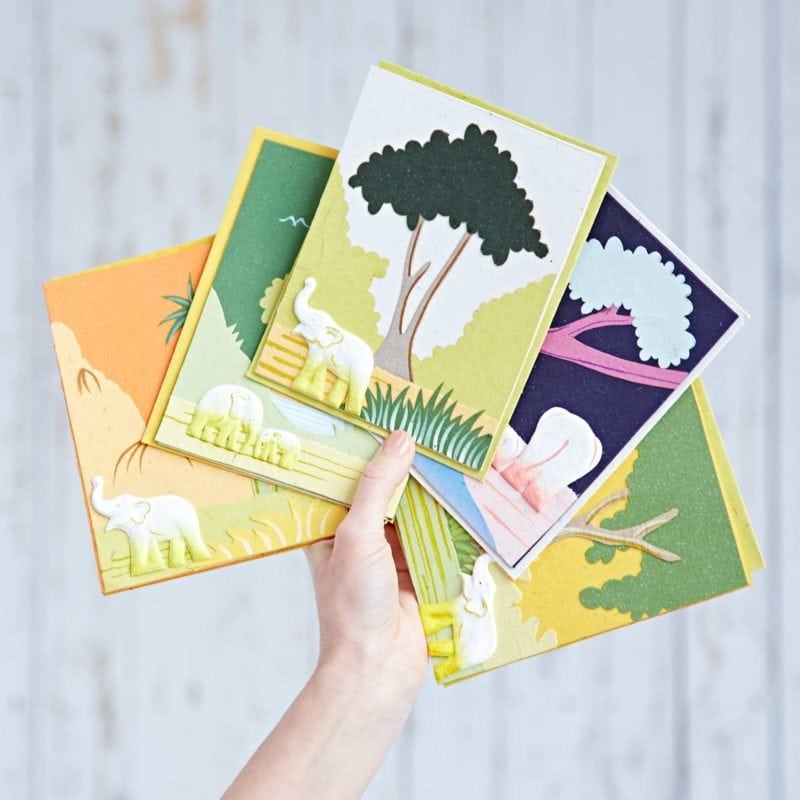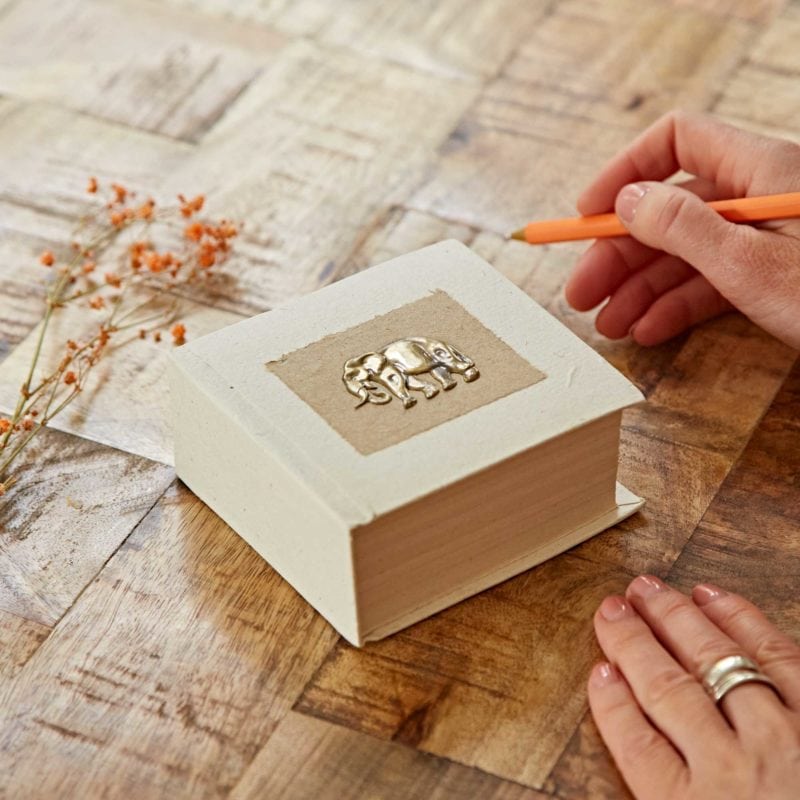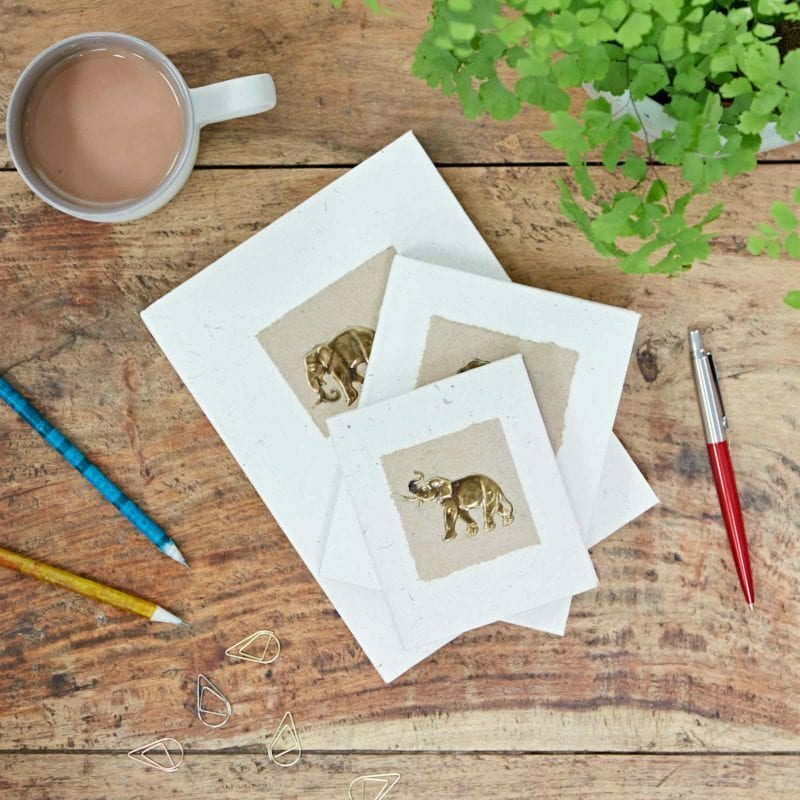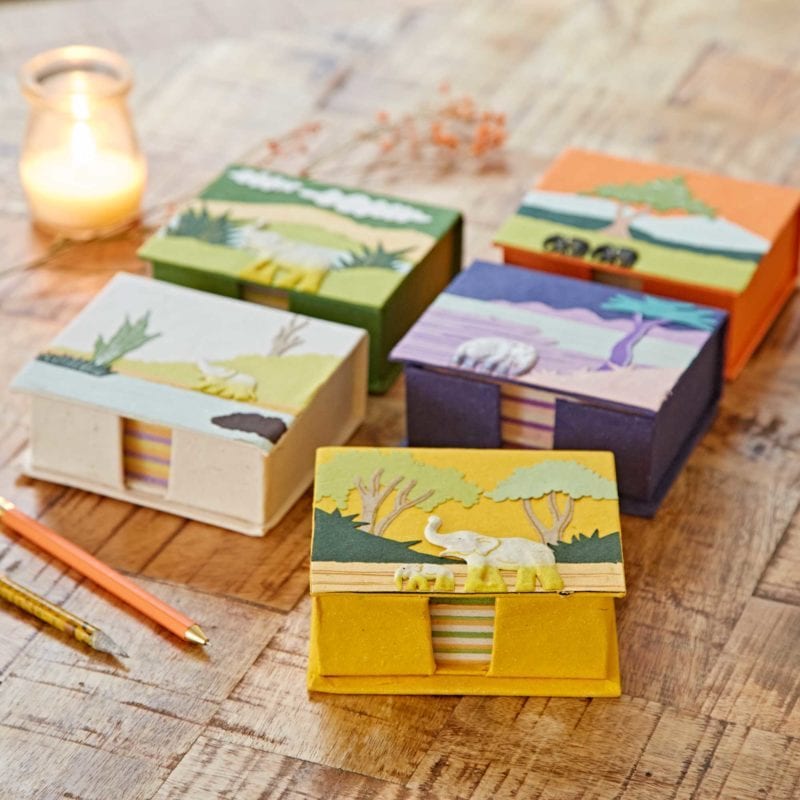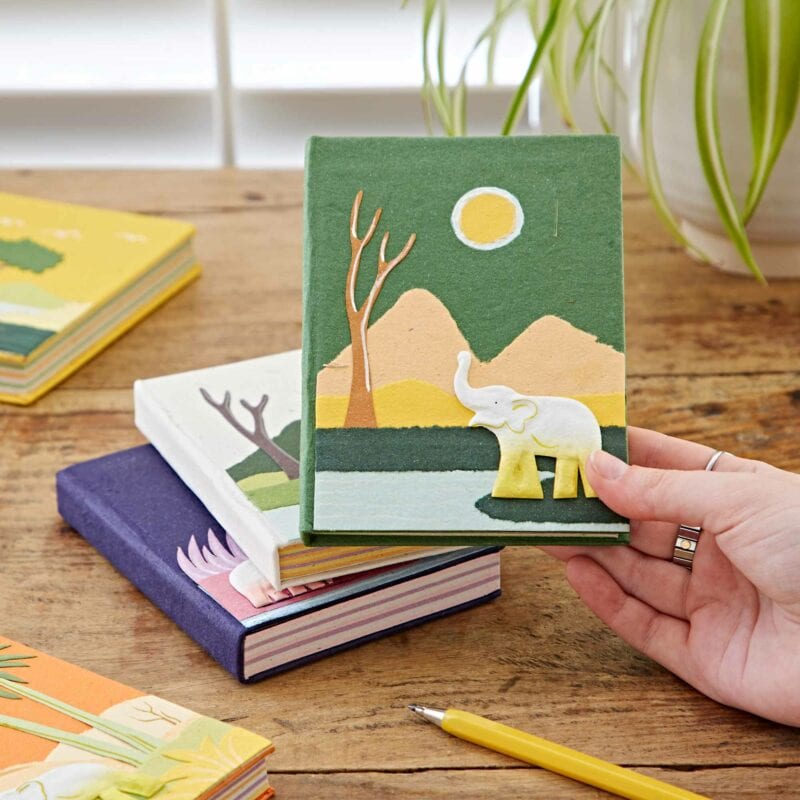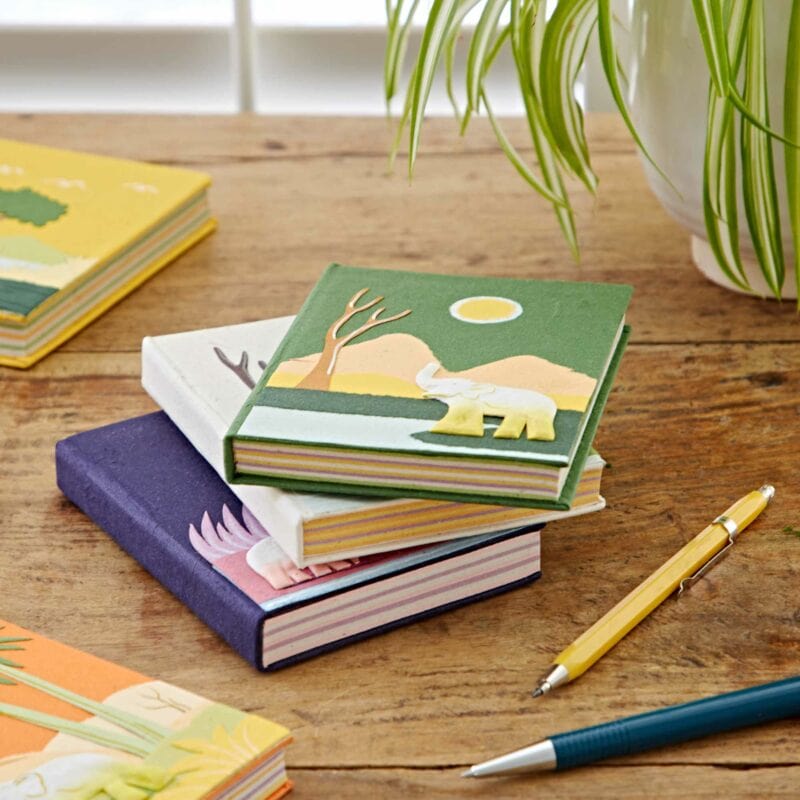All about Paper High
How is Elephant Dung Paper Made?
One of the major contributors to the waste produced at homes, work and schools is paper. You can use two sides, but that’s pretty much it before it becomes another piece of rubbish. It’s estimated that over 2 million trees are cut down every DAY, with the majority of this going towards our global rate of paper consumption. However, the great news is that more and more alternatives to wood pulp paper are being created, from a whole range of materials like cotton, fruits, seaweed, and as you might’ve already guessed… elephant dung.
How is elephant dung made?
As elephants are herbivores, the waste they produce is essentially raw cellulose.
- The dung is collected and washed so that only the plant fibres remain.
- It is then boiled with margosa leaves, a natural disinfectant, and mixed with recycled paper to produce a smoother surface.
- Finally, the mixture is screened and dried just like traditional wood-based paper.
The end result is paper made from 100% natural material, which is sanitary and non-fragrant. Watch the video below to find out more…
Why is elephant dung eco-friendly?
With an adult elephant producing up to 200kg of dung a day, it’s certainly not hard to come by! It helps reduce deforestation and the production for elephant dung paper uses less energy, water, and produces lower carbon emissions compared to the manufacturing process used to create traditional wood-based paper; making it a highly sustainable option.





